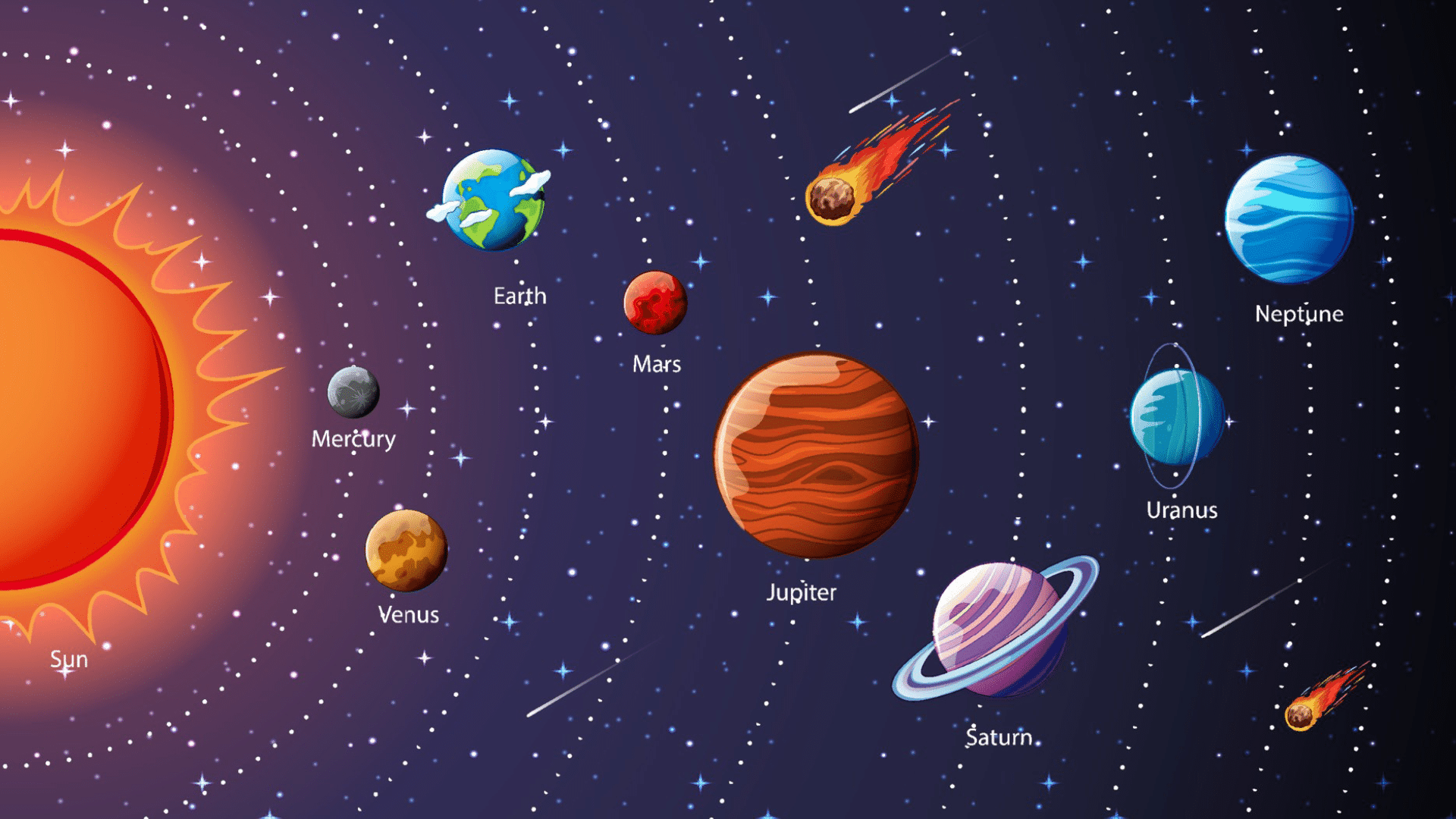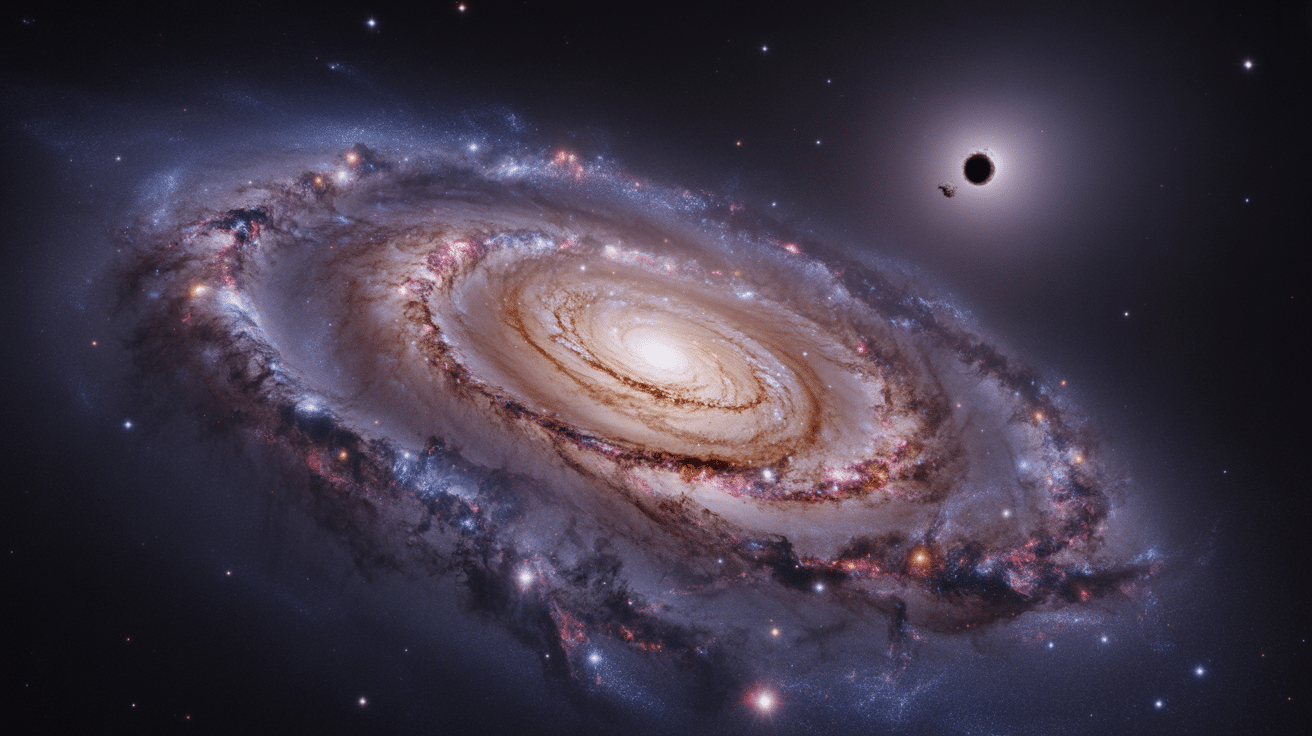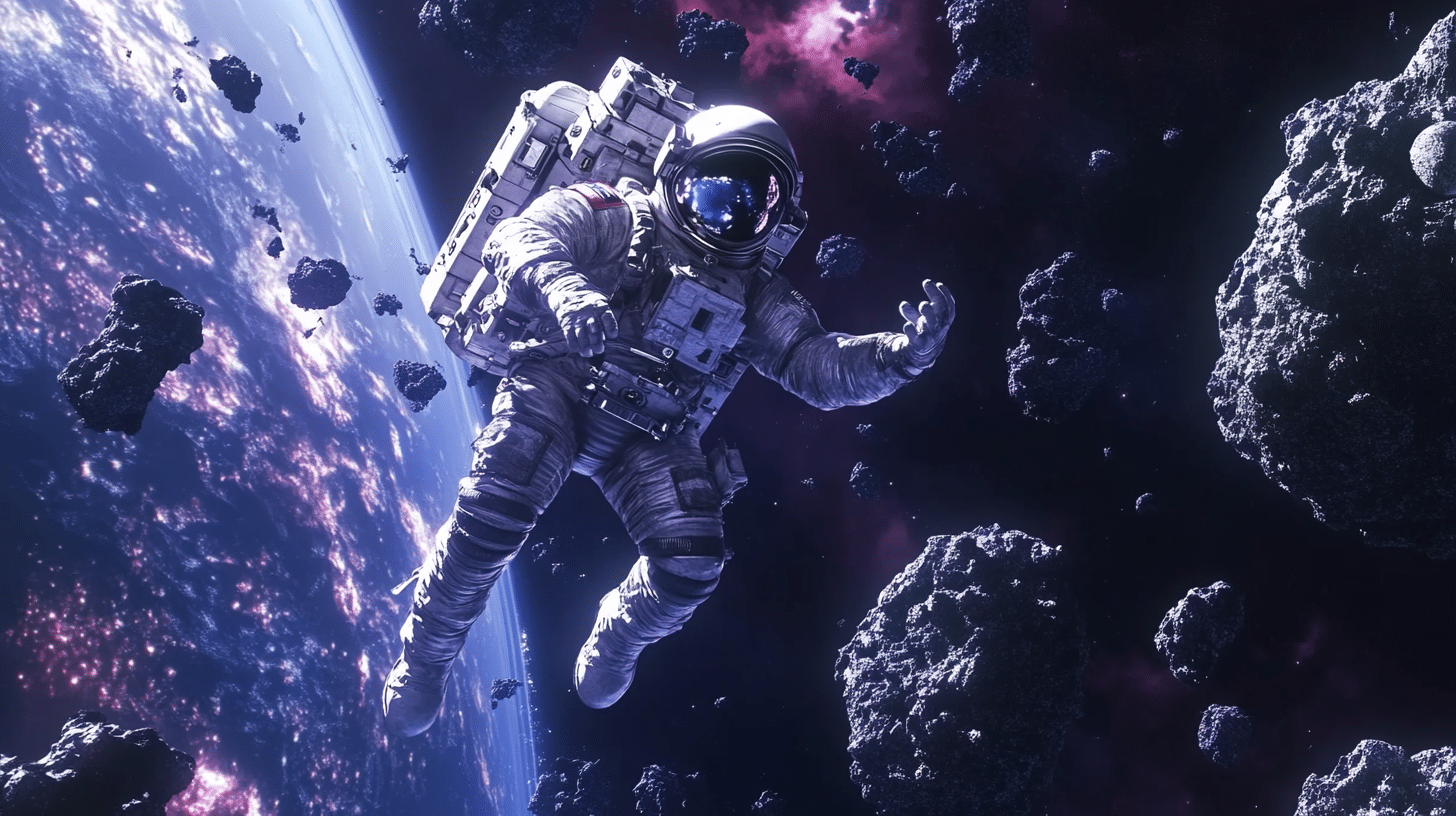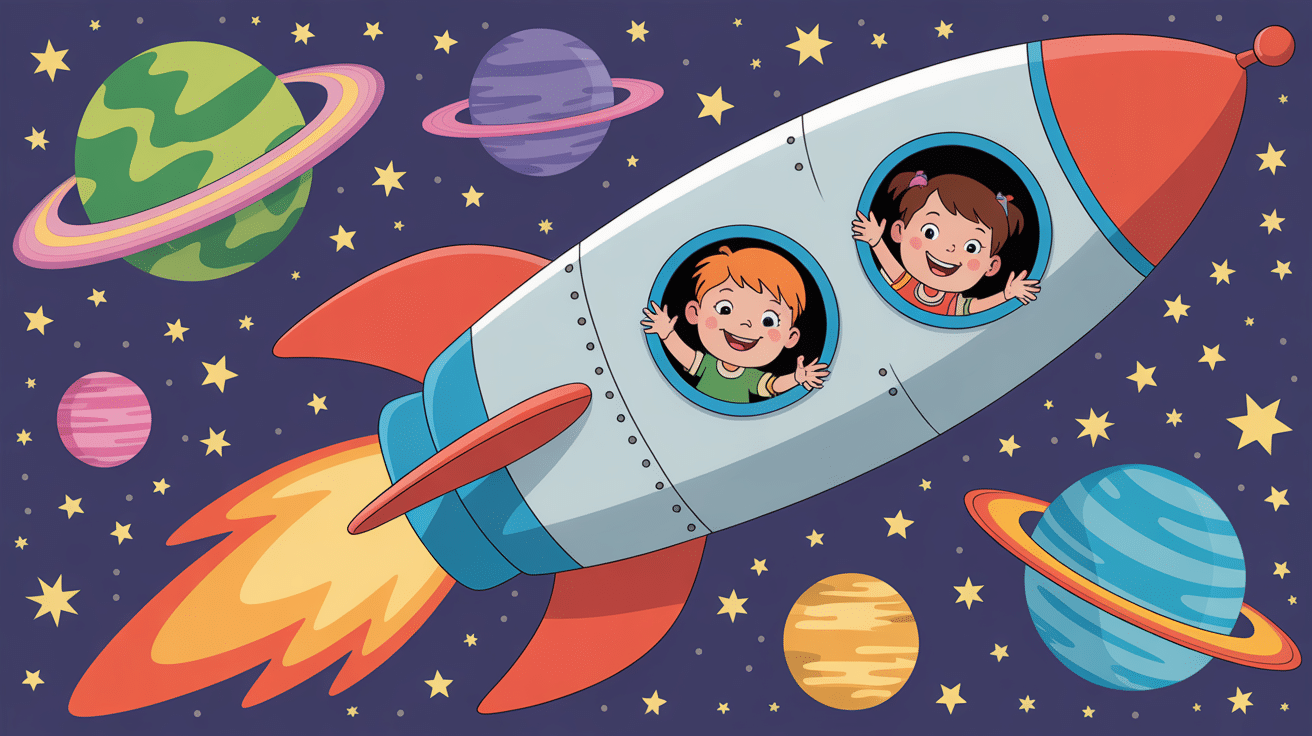Did you notice how your child’s eyes widen when they look up at the night sky? Kids often feel wonder about the stars, planets, and moon they see above them.
Many parents find it hard to answer all those big questions about space. “How many stars are there?” “Why is Mars red?”
That’s why we created this guide with space facts for kids that make learning fun and simple. Your little ones will be able to understand our solar system in ways that fit their curious minds.
Keep reading to find out how these simple facts can turn bedtime questions into moments of learning that you and your child will enjoy together!
Getting to Know Space

Space begins just beyond Earth’s atmosphere and extends into a vast, cold expanse filled with stars, planets, moons, and more.
For young learners, space becomes fascinating when introduced through simple facts and real observations.
- Space is extremely cold – around -455°F in most areas.
- Sound doesn’t travel in space since there’s no air to carry it.
- The Sun is a star, much like the smaller ones visible at night.
- Eight planets orbit the Sun along set paths.
- Earth’s orbit around the Sun takes 365 days.
Children often gaze up, curious about the twinkling lights above. According to NASA’s Space Place, using basic facts and family-friendly skywatching activities helps children build their understanding of space early on.
Parents can discuss moon phases or star patterns to inspire learning.
Solar System Wonders: Space Facts for Kids

Our solar system holds many secrets that can ignite a child’s interest. These facts for kids about planets, moons, and the sun will help young minds grasp what makes our cosmic neighborhood special:
1. The Sun is a huge, glowing ball of hot gases and is the center of our solar system.
2. Mercury is the closest planet to the Sun and has extreme temperatures.
3. Venus is the hottest planet because its thick atmosphere traps heat.
4. Earth is the only planet known to have life and liquid water on its surface.
5. Mars is called the Red Planet because of its rusty, iron-rich soil.
6. Jupiter is the biggest planet and has a giant storm called the Great Red Spot.
7. Saturn is famous for its bright, icy rings made of rock and ice particles.
8. Uranus spins on its side, making its seasons very different from other planets.
9. Neptune is the farthest known planet from the Sun and has powerful winds.
10. Pluto used to be considered a planet but is now classified as a dwarf planet.
11. The Moon is Earth’s only natural satellite and influences our ocean tides.
12. A day on Venus (one full rotation) lasts longer than a year on Venus (its orbit).
13. Jupiter’s Great Red Spot is a storm that has been raging for hundreds of years.
14. Saturn is so light that it would float if you put it in a giant bathtub of water.
15. Olympus Mons on Mars is the tallest volcano in the entire solar system.
16. Earth’s atmosphere protects us from harmful solar radiation and space debris.
17. The asteroid belt is a region filled with rocky bodies between Mars and Jupiter.
18. Mercury has almost no atmosphere, so it can be scorching hot during the day and freezing cold at night.
19. Venus rotates backward compared to most other planets, spinning from east to west.
20. Neptune has the fastest winds recorded in the solar system, reaching over 1,200 miles per hour.
Teaching children about our solar system opens up talks about science and the stars. These facts give kids a starting point for their own space questions.
Universal Mysteries

Beyond our solar system lies a vast universe filled with strange objects and events. Space facts for kids about galaxies, black holes, and stars can help explain big ideas in ways young learners can understand.
21. No one knows what dark matter really is, yet it makes up about 27% of the universe.
22. Comets are icy travelers from the outer solar system that develop bright tails when near the Sun.
23. It takes sunlight about 8 minutes to travel from the Sun to Earth.
24. Earth takes about 365 days to orbit the Sun once, which defines our year.
25. The Moon’s gravity pulls on Earth’s oceans, causing the tides to rise and fall.
26. Besides Pluto, other dwarf planets include Eris, Haumea, Makemake, and Ceres.
27. A light-year is the distance light travels in one year – about 6 trillion miles.
28. The Big Bang theory explains that the universe began around 13.8 billion years ago.
29. Stars are massive balls of glowing gas that produce energy through nuclear fusion.
30. When some stars run out of fuel, they explode in a spectacular event called a supernova.
31. Nebulas are giant clouds of gas and dust where new stars are born.
32. The closest star to us after the Sun is Proxima Centauri, which is 4.24 light-years away.
33. The Andromeda Galaxy is the closest large galaxy to the Milky Way.
34. Astronauts float in space because of microgravity, which is almost zero gravity.
35. Space is a vacuum, meaning there is no air or sound.
36. The International Space Station orbits Earth approximately every 90 minutes.
37. Satellites orbit Earth to help with communication, GPS, and weather forecasts.
The universe may seem too big to grasp, but these basics help make it feel less overwhelming. Small steps in learning lead to bigger understanding over time.
Weird and Wonderful Space Facts for Kids

Space is full of odd things that sound made up but are actually true. These unusual facts for kids share the stranger side of space in ways that will make children laugh while they learn:
38. A solar eclipse happens when the Moon blocks the Sun’s light from reaching Earth.
39. A lunar eclipse occurs when Earth’s shadow covers the Moon.
40. Meteor showers happen when Earth passes through debris left behind by comets.
41. The Hubble Space Telescope has captured some of the most breathtaking images of space.
42. Some moons, like Europa (orbiting Jupiter), may have oceans beneath their icy crusts.
43. The universe keeps expanding, meaning galaxies are moving farther apart every day.
44. Some stars are enormous supergiants, much bigger than our Sun.
45. Dark matter is mysterious stuff that we can’t see but makes up most of the universe’s mass.
46. Yuri Gagarin was the first human to travel into space in 1961.
47. Neil Armstrong was the first person to walk on the Moon in 1969.
48. Space suits protect astronauts from extreme temperatures and lack of air.
49. Mars rovers like Curiosity explore Mars to learn about its surface and history.
50. Astronauts say space smells like burnt steak mixed with metal.
51. You cannot hear sounds in space because there is no air for sound waves to travel.
52. The Sun is so big that about 1.3 million Earths could fit inside it.
53. Stars appear to twinkle because of Earth’s atmosphere bending their light.
54. Jupiter spins the fastest of all planets, completing a rotation in just about 10 hours.
55. Uranus is the coldest planet in our solar system, with temperatures dropping below -370°F.
Sharing these odd facts can make space science feel fun rather than hard. The weird parts of space often stick in young minds the longest.
Wrapping Up
We’ve traveled from our solar system to the far reaches of the universe, sharing facts that make space more understandable for young astronauts.
These space facts for kids serve as starting points for bigger conversations about our place in the cosmos.
The next time your child points to the sky with questions, you’ll have answers that fit their level of understanding. Science becomes more fun when shared in small, digestible pieces.
Why not take this learning outside on a clear night? Look up together and spot the moon, stars, or maybe even a planet.




